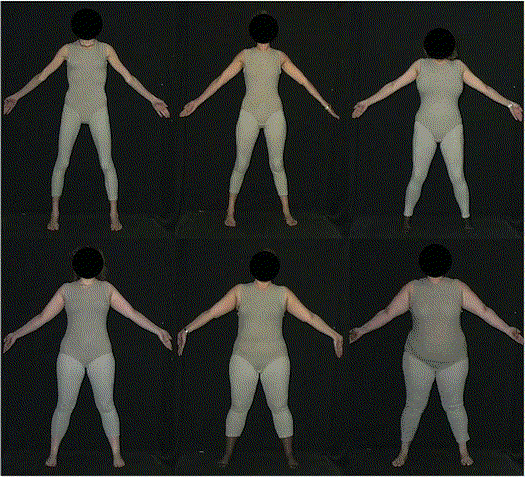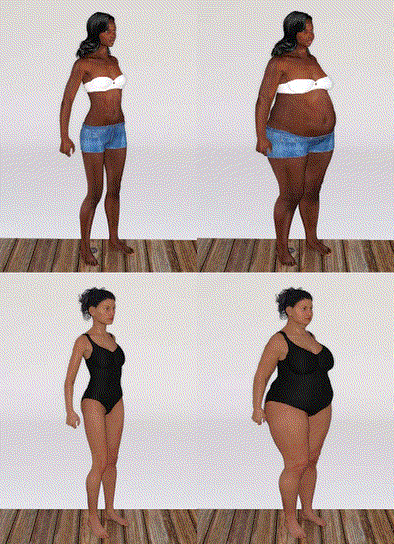Media
Could Watching Television Make You Prefer Thinner Bodies?
Watching Western television increases preferences for thin women.
Posted January 6, 2020 Reviewed by Lybi Ma
Two major theories on why we find a specific body size attractive in women were put to an interesting test in new research published in the Journal of Personality and Social Psychology. One perspective (the ecological or evolutionary perspective) argues that body size preferences reflect local levels of resources. In resource-scarce areas where hunger is common, a preference for heavier bodies may emerge because higher levels of body fat can be protective during food shortages.
Some research has even suggested that compared to men who recently ate, men who are hungry prefer heavier women. An alternative perspective (the sociocultural perspective) argues that visual media are a major influence on our body ideals. If we see a lot of one specific body shape in media images—particularly if that body shape is paired with positive outcomes like wealth, happiness, and romantic success—we learn to value that body shape.

A challenge in conducting research to address these competing views comes from the fact that it can be nearly impossible to disentangle cultural and ecological factors. For example, people with more access to Western media (a cultural factor) are also more likely to have reliable sources of nutrition (an ecological factor). Researchers from Durham University took advantage of a set of cultural changes in Nicaragua to conduct a novel and compelling test of how preferences for thinner vs. fatter bodies may be formed.
The researchers conducted these studies as part of ongoing fieldwork in the Pearl Lagoon communities of Nicaragua (located in the South Caribbean Coast Autonomous Region). In this area of Nicaragua, much of the population has had no access to the Internet or television. Even among those who might be able to afford a television and satellite subscription, media access was limited because of a lack of electricity.
However, in recent years, the Nicaraguan government has worked to spread the electricity grid to remote areas, increasing media access. This “naturally occurring experiment” allowed the researchers to compare people who lived in communities that were geographically similar but varied in terms of access to television. Popular television shows in this area (among those who have access) include telenovelas (Latin American soap operas) and Hollywood action movies.
Three hundred and fourteen men and women (ranging in age from 15 to 79) were recruited from seven different villages in this area. In the first study, participants indicated whether they had access to television (either their own or in a friend’s home that they regularly visited) and how many hours of television they had watched in the past week. Next, participants completed a “bodyweight preference task” that involved rating the attractiveness of 50 photographs of women who varied in body size from very thin (a BMI of 11) to heavier (a BMI of 42). The women in the images were all wearing identical, form-fitting leotards and were in the same pose; their faces were not visible. The researchers showed participants the images in random order and made sure to emphasize that there were no right or wrong answers.

Results showed that the more television participants had watched, the more they found thinner women’s bodies attractive. Compared to those who watched between zero and one hour of television, those who watched between three and four hours per week preferred women a full BMI point thinner. As additional evidence of this trend, the authors noted that the two villages with the lowest level of television access were also at the top of the scale in terms of preferring larger bodies. Those with higher levels of education also showed a preference for thinner bodies. The researchers speculated that this might be due to traveling to larger towns for their education, increasing exposure to Western media.
In a follow-up study, the authors conducted an experimental test of the influence of visual media on body preferences among participants who lived in villages with virtually no television access. Half of these participants spent 15 minutes viewing a set of images featuring racially diverse fashion models who were thin (UK size 4-6); the other half viewed plus size models (UK size 16-28). Before and after viewing the fashion images, participants completed a task in which they manipulated eight computer-generated avatar women until the women matched their preferred body size. The authors were able to use images with skin tone and hair that was more similar to the participants (unlike in the first study, when the body images all featured white British women).

The results showed that body preferences of those who viewed thinner models changed to favor thinness; preferences of those who viewed plus size models changed to favor heavier bodies. The authors concluded that our perceptions regarding the attractiveness of different body shapes are easily changed by cultural influences. As more areas of the world gain access to popular Western television programs, the thin, hourglass-shaped bodies that tend to populate these programs may have an even stronger influence on global beauty ideals.


